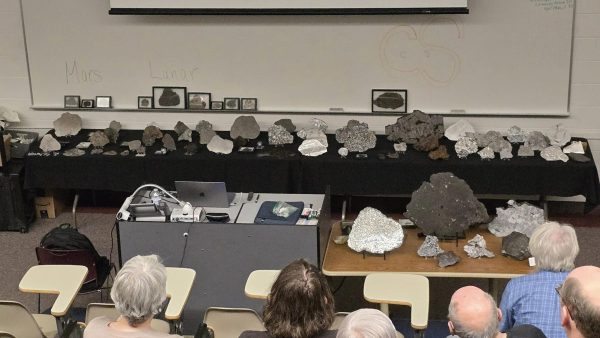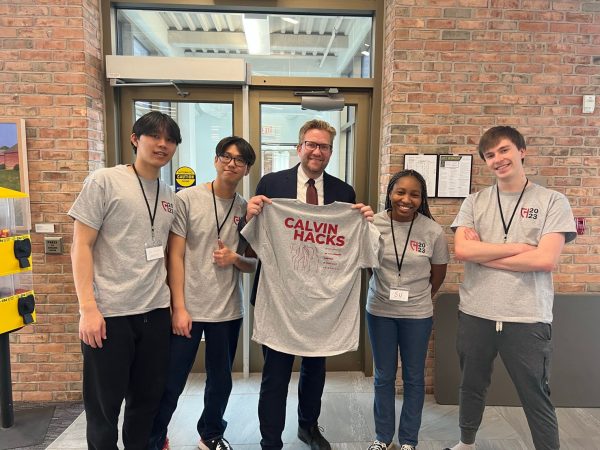Calvin Mars Rover Design Team provides students with engineering challenge
“First off, we’re not sending a rover to Mars,” Fenton Lawler stated, regarding the most common misconception about the Rover team he helped found. The Calvin Mars Rover Design Team, entering their second year, is currently preparing to build another rover while spreading the word about their organization and recruit more members. The organization was founded by students Sam Dare and Fenton Lawler last year.
Lawler, the group’s electrical lead, told the story of how the group came to be. “Sam and I, we meet the first day of Quest. We made the rounds at Cokes and Clubs and didn’t really find anything [like a robotics club]. First week of school, we decided to start a design team.”
Dare, the group’s chief engineer, recounted that they had initially struggled to gain a faculty sponsor, but that professor Renard Tubergen from engineering was immediately enthusiastic about their project.
Because the university had reached its student organization limit, the Mars Rover Design Team became a division of the American Society of Mechanical Engineers (ASME). Dare and Lawler said they were passionate about competing in a robotics challenge, but it took them a while to decide to build a Mars Rover. They were excited about the University Rover Challenge because it was very open-ended.
The University Rover Challenge is an international competition hosted by the Mars Society. Qualifying teams are chosen to compete in a competition in Hanksville, Utah. This location was chosen because it has terrain similar to Mars. At the competition rovers have to navigate between four checkpoints and complete a task at each one.
Although the members of the Rover Design team are mostly engineering majors, they emphasized the interdisciplinary nature of the group. Team member Duncan Waanders noted that in addition to building the rover they also have to “sell it” in order to get into the competition and are looking for business, arts and communication majors to join the team.
Members of the team also spoke about why they joined and what they liked best. “I wanted an opportunity to do something outside of class where I could use my love for computers and programming,” said Joel Muyskens, a programing lead. Kees Van Liere, the mechanical lead, added, “It’s also nice to be able to work with people from other engineering disciplines.”
The team is determined to make the competition in Utah this year. Last year, they narrowly missed being invited, a remarkable success for a rookie team. “We are truly one of the smallest colleges I know of competing in this,” said Waanders. “And we are doing pretty well.”







